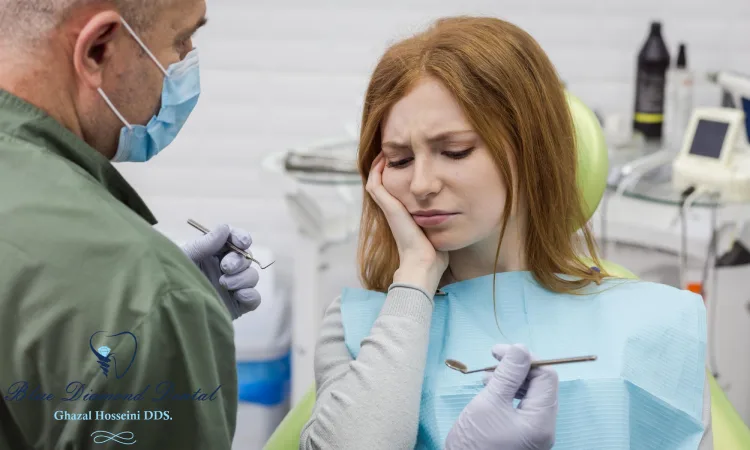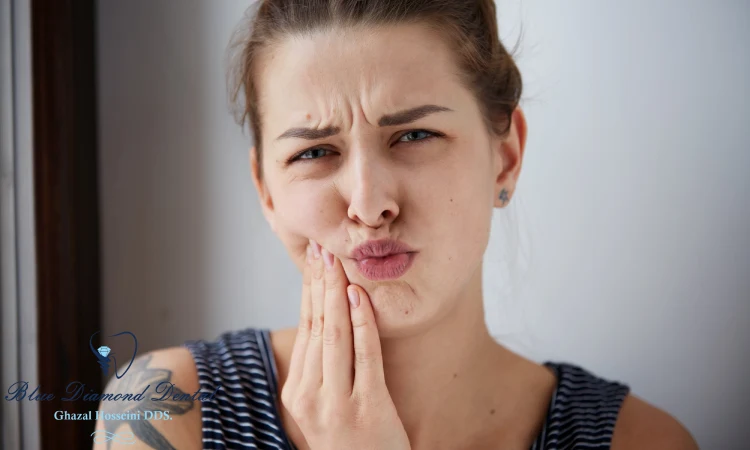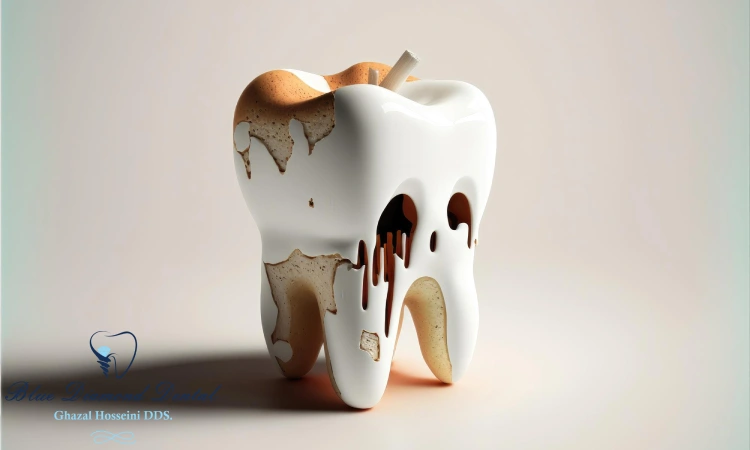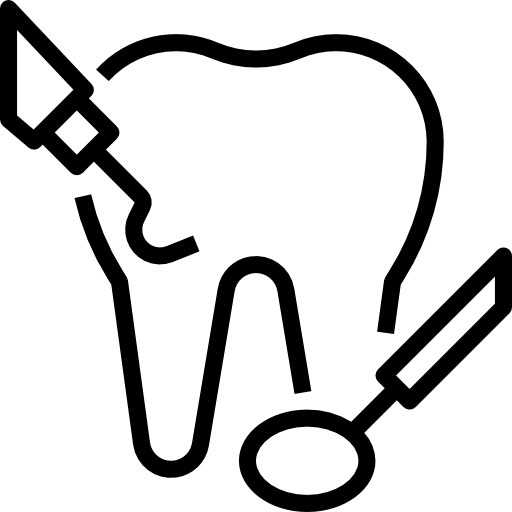
Tooth Erosion: Causes, Treatment, and Prevention
Your teeth are protected by a hard, shiny layer called enamel. Enamel is the hardest substance in your body, and it helps your teeth withstand the forces of biting, chewing, and grinding. Enamel also protects your teeth from temperature changes, bacteria, and acids.
However, enamel is not indestructible. It can wear away over time due to various factors, such as diet, habits, and medical conditions. This process is called tooth erosion, and it can have serious consequences for your oral and overall health.
In this article, you will learn:
- What is tooth erosion and how does it happen?
- What are the signs and symptoms of tooth erosion?
- What are the complications and risks of tooth erosion?
- How can you prevent and treat tooth erosion?
- When should you see a dentist for tooth erosion?
What is tooth erosion and how does it happen?
Tooth erosion is the loss of tooth enamel due to acid attack. Acid can come from different sources, such as:

- Foods and drinks that are high in acid, such as citrus fruits, vinegar, wine, soda, and sports drinks.
- Stomach acid that refluxes into the mouth, such as in gastroesophageal reflux disease (GERD) or bulimia nervosa.
- Medications that lower the pH of the mouth, such as aspirin, antihistamines, and asthma inhalers.
- Dry mouth or reduced saliva flow, which can impair the natural buffering and cleansing action of saliva.
When acid comes into contact with your teeth, it dissolves the minerals in the enamel, making it softer and thinner. This weakens the enamel and exposes the underlying layer of dentin, which is more yellow and sensitive. Over time, tooth erosion can lead to tooth decay, infection, and tooth loss.
What are the signs and symptoms of tooth erosion?
Tooth erosion can cause various signs and symptoms, depending on the severity and extent of the enamel loss. Some of the common signs and symptoms of tooth erosion are:
- Sensitivity: You may feel pain or discomfort when your teeth are exposed to hot, cold, sweet, or sour foods and drinks. This is because the dentin contains tiny tubules that connect to the nerves inside the tooth, and when the enamel is eroded, these tubules become more exposed and stimulated by external stimuli.
- Discoloration: Your teeth may appear yellow, dull, or stained, as the dentin becomes more visible and the enamel loses its shine and translucency. You may also notice white spots or patches on your teeth, which indicate areas of enamel demineralization or breakdown.
- Cracks and chips: Your teeth may develop cracks, chips, or rough edges, as the enamel becomes brittle and prone to fracture. You may also notice cupping or indentations on the chewing surfaces of your teeth, which indicate areas of enamel loss or wear.
- Changes in shape and size: Your teeth may look shorter, thinner, or more rounded, as the enamel is worn away and the dentin is exposed. You may also notice gaps or spaces between your teeth, as the enamel is eroded and the teeth shift or move.
What are the complications and risks of tooth erosion?
Tooth erosion can have serious complications and risks for your oral and overall health, such as:

- Tooth decay: Tooth decay is the damage or destruction of the tooth structure due to bacteria and acids. Tooth erosion can increase the risk of tooth decay, as the enamel is weakened and the dentin is exposed, making the teeth more susceptible to bacterial attack and acid demineralization. Tooth decay can cause cavities, pain, infection, and tooth loss.
- Gum disease: Gum disease is the inflammation and infection of the gums and the supporting tissues of the teeth. Tooth erosion can increase the risk of gum disease, as the enamel is eroded and the teeth become more sensitive and prone to plaque accumulation and bleeding. Gum disease can cause redness, swelling, bad breath, and receding gums. It can also lead to periodontitis, a more severe form of gum disease that can damage the bone and tissue that hold the teeth in place, and cause tooth loss and other health problems.
- Bite and alignment problems: Bite and alignment problems are the abnormal or improper positioning of the teeth and jaws. Tooth erosion can cause bite and alignment problems, as the enamel is worn away and the teeth change in shape and size, affecting the way they fit together and function. Bite and alignment problems can cause difficulty in chewing, speaking, and breathing, as well as headaches, jaw pain, and TMJ disorders.
- Aesthetic and psychological issues: Tooth erosion can affect your appearance and self-esteem, as your teeth become discolored, chipped, or misshapen, affecting your smile and facial expression. Tooth erosion can also affect your psychological well-being, as you may feel embarrassed, insecure, or depressed about your teeth, and avoid social or professional situations that require smiling or talking.
How can you prevent and treat tooth erosion?
Tooth erosion can be prevented and treated by following some simple steps, such as:

- Avoid or limit acidic foods and drinks: Acidic foods and drinks are the main cause of tooth erosion, so you should avoid or limit them as much as possible. If you do consume them, you should do so with meals or at meal times, rather than between meals or on an empty stomach, as this can reduce the acid exposure and contact time with your teeth. You should also rinse your mouth with water after consuming acidic foods and drinks, and wait at least 30 minutes before brushing your teeth, as this can allow your saliva to neutralize the acid and remineralize your enamel.
- Practice good oral hygiene: Good oral hygiene is essential for preventing and treating tooth erosion, as it can help remove plaque and bacteria, and protect your enamel from acid attack. You should brush your teeth twice a day with a soft-bristled toothbrush and a fluoride toothpaste, and floss once a day to clean between your teeth. You should also use a mouthwash or rinse that contains fluoride, which can strengthen your enamel and prevent tooth decay. You should avoid brushing your teeth too hard or too soon after eating or drinking acidic foods and drinks, as this can damage your enamel and worsen tooth erosion.
- Use fluoride products: Fluoride is a mineral that can help prevent and treat tooth erosion, as it can strengthen your enamel and make it more resistant to acid attack. You can get fluoride from various sources, such as toothpaste, mouthwash, rinse, gel, varnish, or supplement. You can also get fluoride from your drinking water, if it is fluoridated, or from your dentist, who can apply fluoride to your teeth professionally. You should use fluoride products as directed by your dentist or the product label, and avoid swallowing or overusing them, as this can cause side effects, such as fluorosis, which is a condition that causes white or brown spots on your teeth due to excess fluoride intake.
- Visit the dentist regularly: Visiting the dentist regularly is important for preventing and treating tooth erosion, as your dentist can examine your teeth and gums, and detect and treat any signs of tooth erosion, decay, or disease. Your dentist can also perform professional cleaning and polishing, which can remove plaque and stains, and restore the shine and smoothness of your enamel. Your dentist can also advise you on the best oral care products and practices for your specific needs, and recommend or provide other treatments, such as sealants, bonding, veneers, crowns, or implants, which can protect, repair, or replace your eroded teeth.
When should you see a dentist for tooth erosion?
You should see a dentist for tooth erosion if you notice any of the following signs or symptoms:
- Sensitivity or pain in your teeth when exposed to hot, cold, sweet, or sour foods and drinks.
- Discoloration or staining of your teeth, or white spots or patches on your enamel.
- Cracks, chips, or rough edges on your teeth, or cupping or indentations on your chewing surfaces.
- Changes in shape or size of your teeth, or gaps or spaces between your teeth.
- Difficulty in chewing, speaking, or breathing, or headaches, jaw pain, or TMJ disorders.
You should also see a dentist for tooth erosion if you have any of the following risk factors or conditions that can increase your susceptibility to tooth erosion, such as:
- Frequent consumption of acidic foods and drinks, such as citrus fruits, vinegar, wine, soda, and sports drinks.
- Chronic acid reflux, also known as gastroesophageal reflux disease (GERD), or bulimia nervosa, which exposes your teeth to stomach acid.
- Medications that lower the pH of your mouth, such as aspirin, antihistamines, and asthma inhalers.
- Dry mouth or reduced saliva flow, which can impair the natural buffering and cleansing action of saliva.
- Genetic disorders, such as amelogenesis imperfecta or enamel hypoplasia, that affect tooth development or enamel formation.






